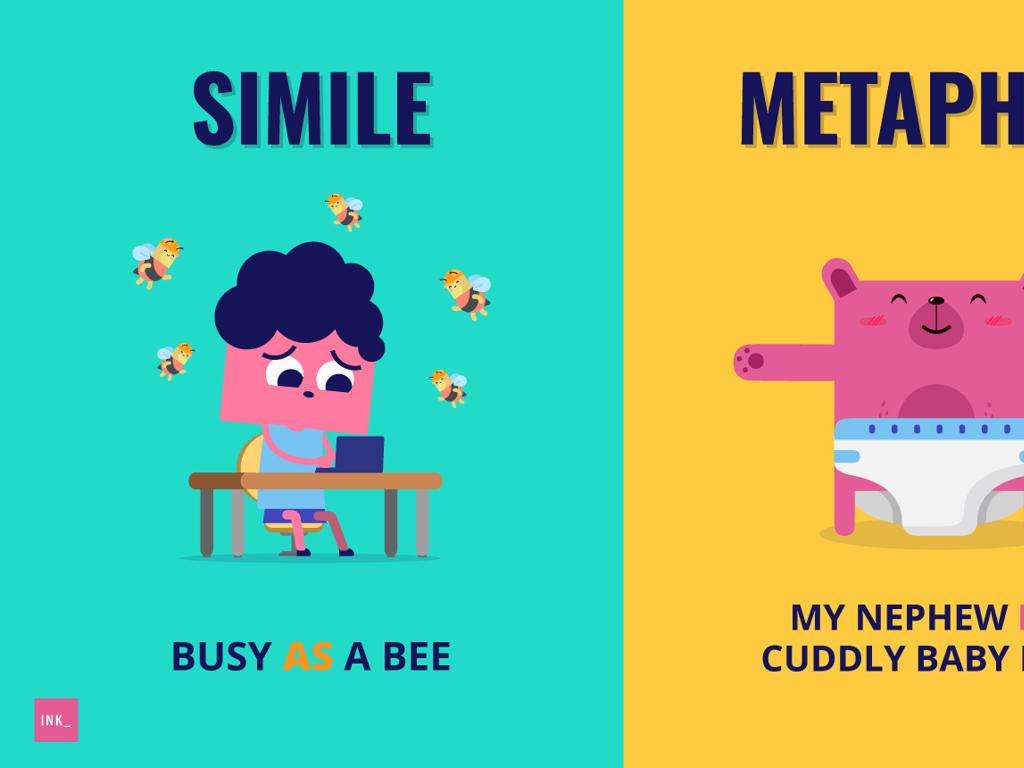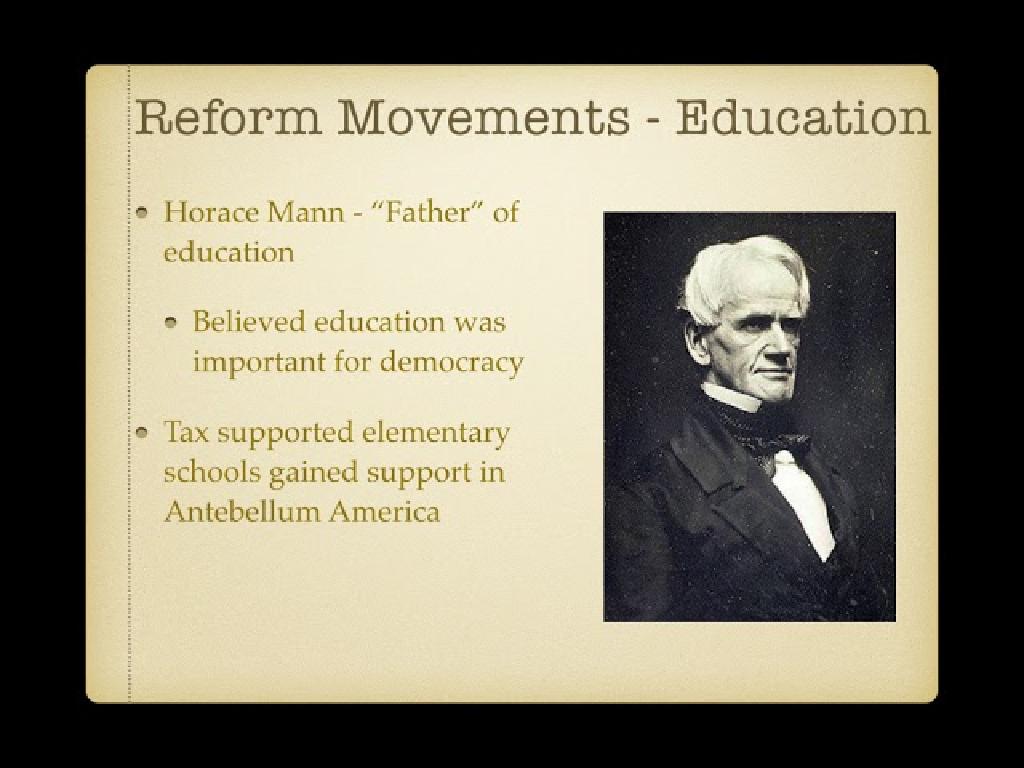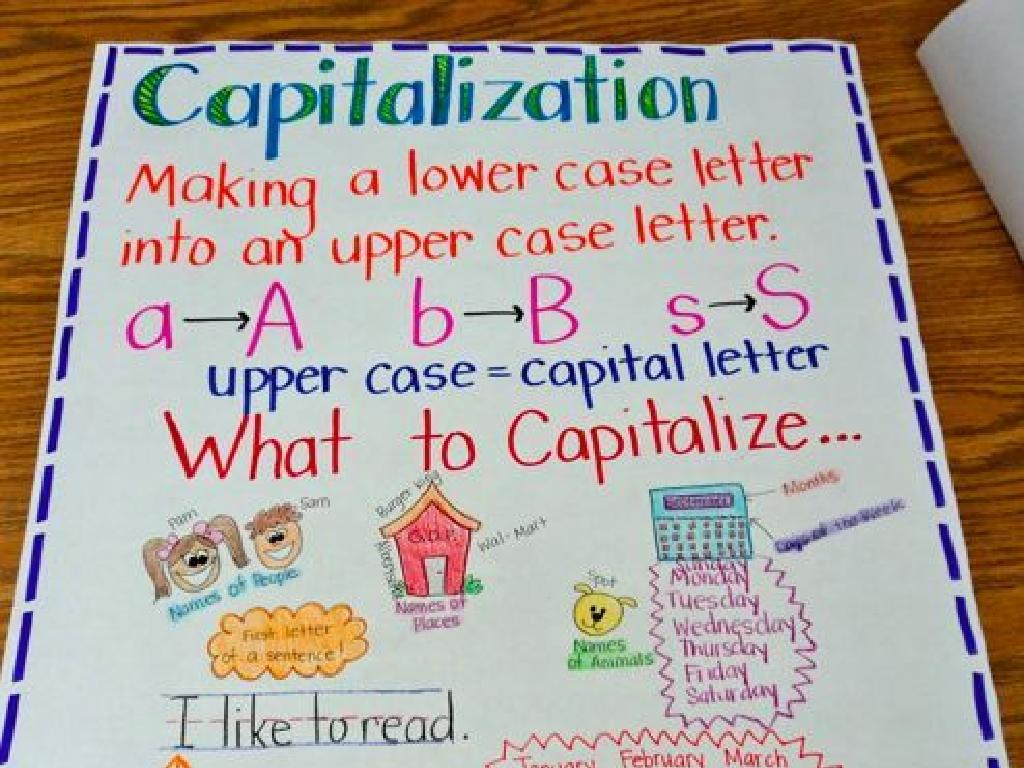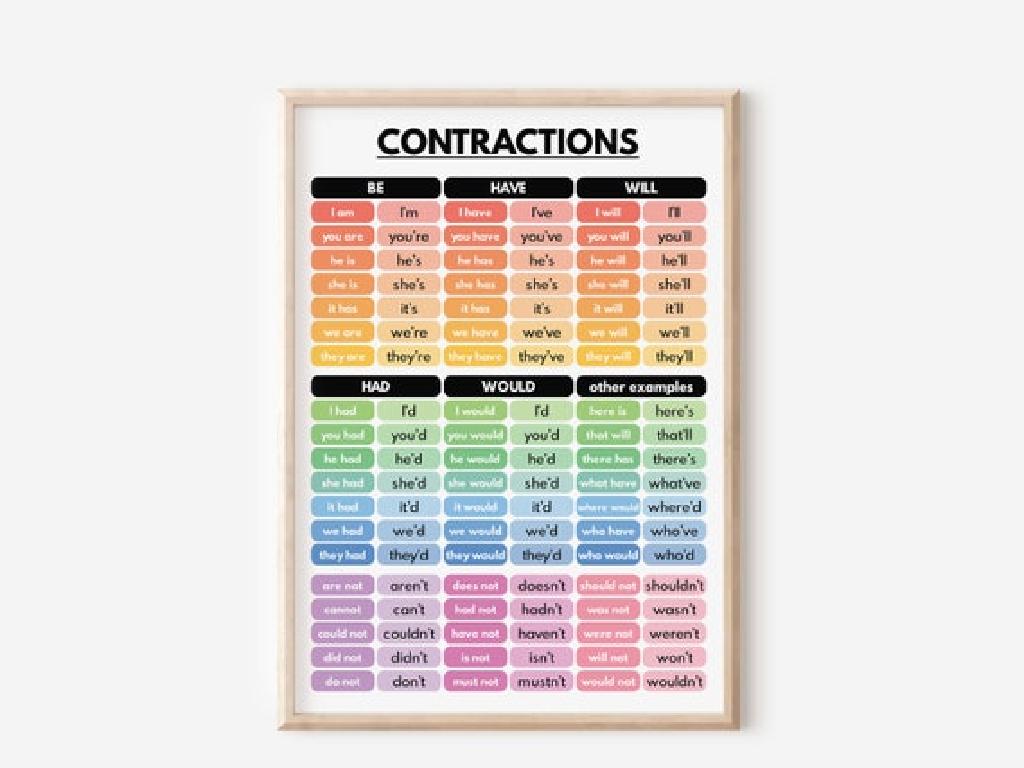Identify Common And Proper Nouns
Subject: Language arts
Grade: Fifth grade
Topic: Nouns
Please LOG IN to download the presentation. Access is available to registered users only.
View More Content
Welcome to Nouns!
– Introduction to the topic of Nouns
– Definition of a noun
– A noun represents a person, place, thing, or idea
– Identify nouns in the classroom
– Look around and name objects you see
– Engage with examples
– Share your examples with the class
|
Begin the class with a warm welcome and an engaging introduction to the topic of nouns. Explain that a noun is a word that names a person, place, thing, or idea, which is a foundational concept in grammar. Encourage students to look around the classroom and identify nouns they can see, such as ‘desk’, ‘teacher’, ‘book’, etc. This activity helps students apply the definition of nouns to real-world examples and prepares them for distinguishing between common and proper nouns in subsequent lessons. Make sure to provide positive feedback and support as students share their examples to foster a supportive learning environment.
Exploring Common Nouns
– Definition of common nouns
– Words for general items, not specific names
– Examples of common nouns
– ‘city’, ‘dog’, ‘teacher’ are not specific names
– Classroom common noun hunt
– Find and list items in our classroom
– Discuss findings with class
– Share and learn from each other’s lists
|
Begin the lesson by explaining that common nouns are general names for things, places, or people, and are not capitalized unless they start a sentence. Provide clear examples such as ‘city’, ‘dog’, and ‘teacher’, and contrast them with proper nouns. For the activity, have students look around the classroom and write down common nouns they see, like ‘desk’, ‘chair’, ‘board’, etc. After the hunt, ask students to share their lists with the class to discuss and compare findings. This will help reinforce their understanding of common nouns and how they differ from proper nouns. Encourage students to think about why certain nouns are ‘common’ and the role they play in sentences.
Exploring Proper Nouns
– Definition of proper nouns
– Names specific people, places, or things
– Examples: ‘New York City’, ‘Rover’, ‘Mrs. Smith’
– ‘New York City’ for a place, ‘Rover’ for a pet, ‘Mrs. Smith’ for a person
– Proper nouns start with a capital
– Always capitalize the first letter of a proper noun
|
This slide introduces the concept of proper nouns to the students. Proper nouns are specific names given to particular people, places, or things and are always capitalized. Examples help students recognize proper nouns in context. Emphasize the importance of capitalization as it distinguishes proper nouns from common nouns. Encourage students to look around and list proper nouns they know from their surroundings, like the name of their school, city, favorite restaurant, or historical landmarks. This will help them understand the concept and see its application in everyday life.
Common vs. Proper Nouns
– Differences between noun types
– Common nouns are general names, proper nouns are specific.
– ‘country’ vs. ‘Canada’
– ‘country’ is a common noun, ‘Canada’ is a proper noun.
– ‘company’ vs. ‘Google’
– ‘company’ is a common noun, ‘Google’ is a proper noun.
– Interactive noun quiz
|
This slide introduces the concept of common and proper nouns to the students. Start by explaining that common nouns are general names for people, places, or things, like ‘city’ or ‘dog’, while proper nouns name specific ones, like ‘New York’ or ‘Fido’, and are always capitalized. Use the examples provided to illustrate the difference. For the interactive quiz, prepare a list of nouns and ask students to identify them as common or proper. This activity will help reinforce their understanding and provide a practical application of the lesson. Make sure to have a variety of examples and encourage students to explain their reasoning for each answer.
Let’s Practice: Common and Proper Nouns
– Identify nouns in sentences
– Find and label common and proper nouns in provided sentences.
– Correct capitalization errors
– Look for and fix any capitalization mistakes in a paragraph.
– Group activity: story creation
– Work together to write a story that includes both types of nouns.
– Use common & proper nouns
|
This slide is designed for a class activity focused on applying knowledge of common and proper nouns. Students will first work individually or in pairs to identify and label nouns in sentences, distinguishing between common and proper nouns. Next, they will correct capitalization errors in a given paragraph, reinforcing the rule that proper nouns are always capitalized. For the group activity, divide the class into small groups and have them collaborate to create a story that includes both common and proper nouns, ensuring they understand the difference and the importance of correct capitalization. Provide examples and guidance as needed, and prepare to offer feedback on their stories in the next class.
Class Activity: Noun Hunt Adventure
– Instructions for ‘Noun Hunt’ activity
– Find and categorize nouns
– Look for nouns around you and decide if they’re common or proper
– Share findings with classmates
– Discuss the different nouns discovered
– Why did you categorize the nouns that way?
|
This interactive activity is designed to help students apply their knowledge of common and proper nouns in a fun and engaging way. Provide students with a worksheet to record the nouns they find. They should roam around the classroom or school to spot nouns, categorizing them as common (general names like ‘dog’, ‘school’, ‘teacher’) or proper (specific names like ‘Rover’, ‘Lincoln Elementary’, ‘Mrs. Smith’). After the hunt, students will share their lists with the class and discuss why they categorized the nouns as they did. This will help reinforce their understanding of the difference between common and proper nouns. For the teacher: Prepare a list of locations where students are likely to find a variety of nouns, ensure safety during the activity, and consider pairing students to encourage collaboration.
Wrapping Up: Common & Proper Nouns
– Review today’s noun concepts
– Homework: Craft 10 sentences
– Include both common and proper nouns in each sentence.
– Capitalize proper nouns
– Remember, proper nouns name specific people, places, or things.
– Share sentences next class
|
As we conclude today’s lesson on common and proper nouns, remind students of the key differences between the two. For homework, they should write 10 original sentences that incorporate both common and proper nouns, ensuring proper nouns begin with capital letters. This exercise will help reinforce their understanding of how to identify and correctly use common and proper nouns in writing. In the next class, ask volunteers to share their sentences, which will provide an opportunity for peer learning and further clarification. Emphasize the importance of capitalization rules as part of proper grammar and writing skills.





